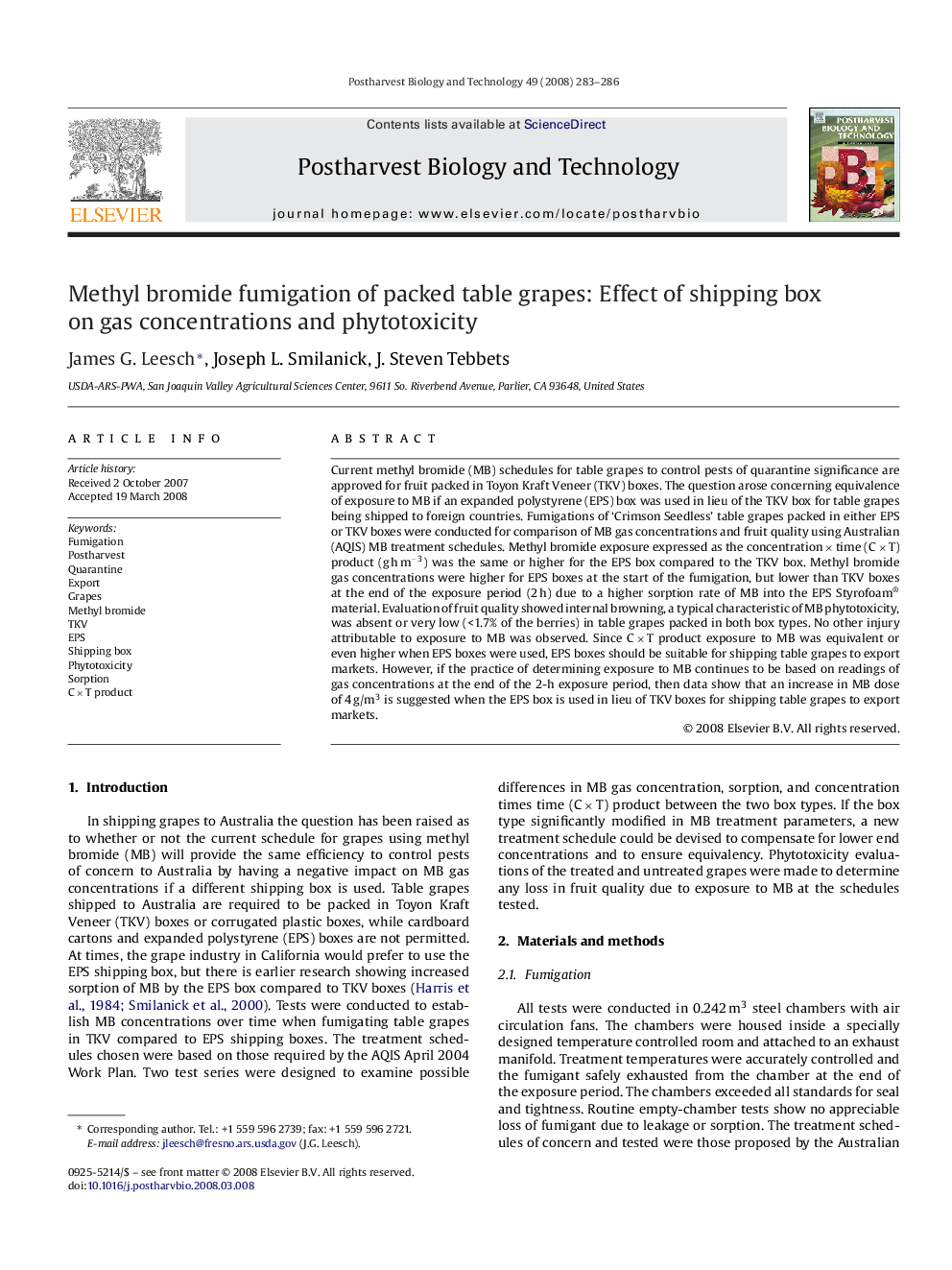| Article ID | Journal | Published Year | Pages | File Type |
|---|---|---|---|---|
| 4519572 | Postharvest Biology and Technology | 2008 | 4 Pages |
Current methyl bromide (MB) schedules for table grapes to control pests of quarantine significance are approved for fruit packed in Toyon Kraft Veneer (TKV) boxes. The question arose concerning equivalence of exposure to MB if an expanded polystyrene (EPS) box was used in lieu of the TKV box for table grapes being shipped to foreign countries. Fumigations of ‘Crimson Seedless’ table grapes packed in either EPS or TKV boxes were conducted for comparison of MB gas concentrations and fruit quality using Australian (AQIS) MB treatment schedules. Methyl bromide exposure expressed as the concentration × time (C × T) product (g h m−3) was the same or higher for the EPS box compared to the TKV box. Methyl bromide gas concentrations were higher for EPS boxes at the start of the fumigation, but lower than TKV boxes at the end of the exposure period (2 h) due to a higher sorption rate of MB into the EPS Styrofoam® material. Evaluation of fruit quality showed internal browning, a typical characteristic of MB phytotoxicity, was absent or very low (<1.7% of the berries) in table grapes packed in both box types. No other injury attributable to exposure to MB was observed. Since C × T product exposure to MB was equivalent or even higher when EPS boxes were used, EPS boxes should be suitable for shipping table grapes to export markets. However, if the practice of determining exposure to MB continues to be based on readings of gas concentrations at the end of the 2-h exposure period, then data show that an increase in MB dose of 4 g/m3 is suggested when the EPS box is used in lieu of TKV boxes for shipping table grapes to export markets.
